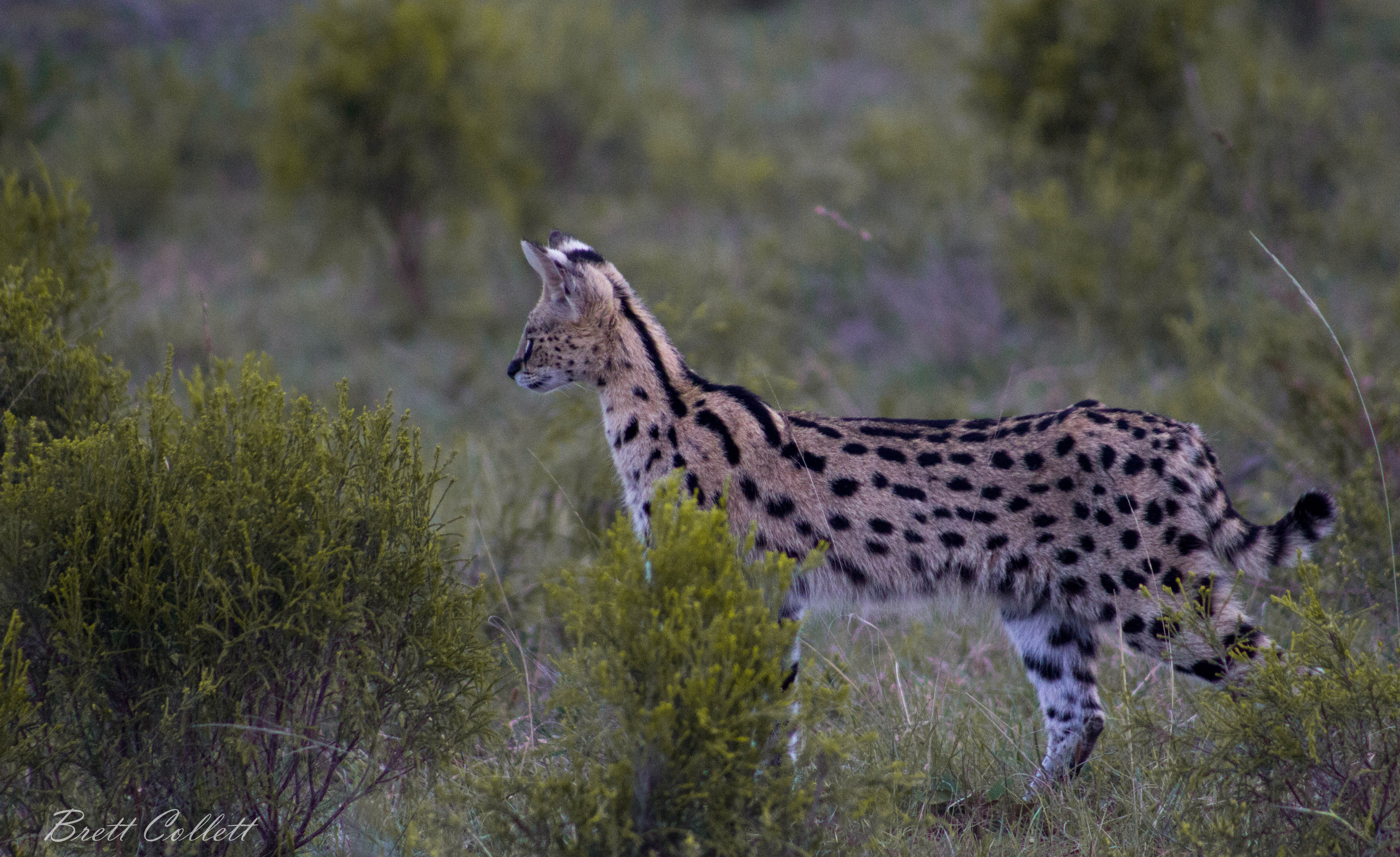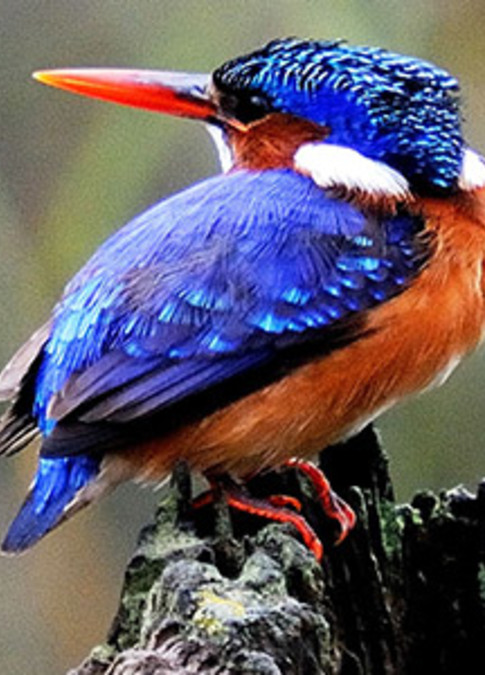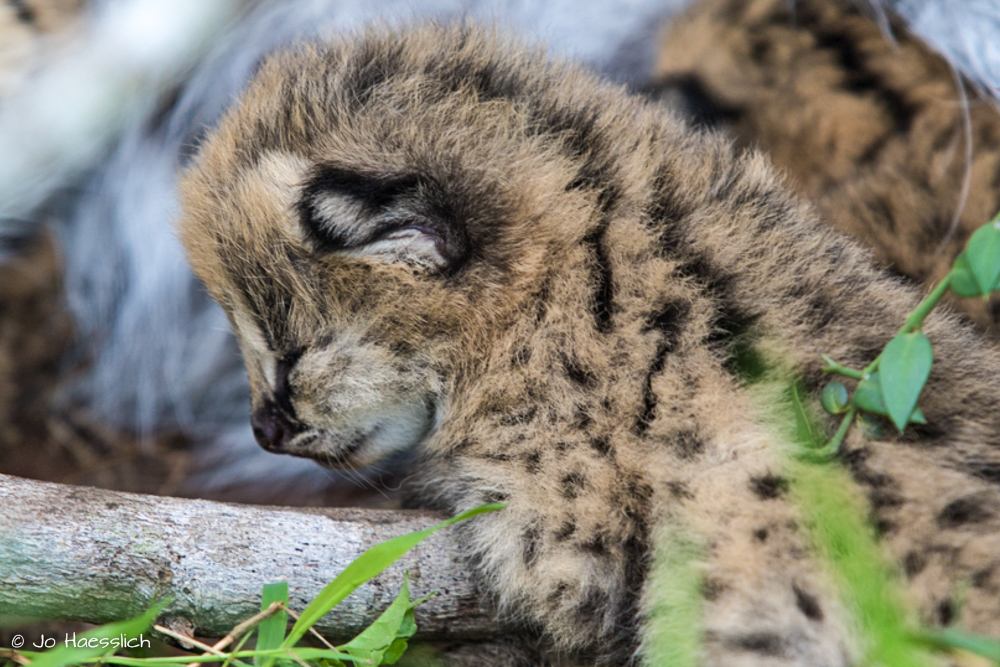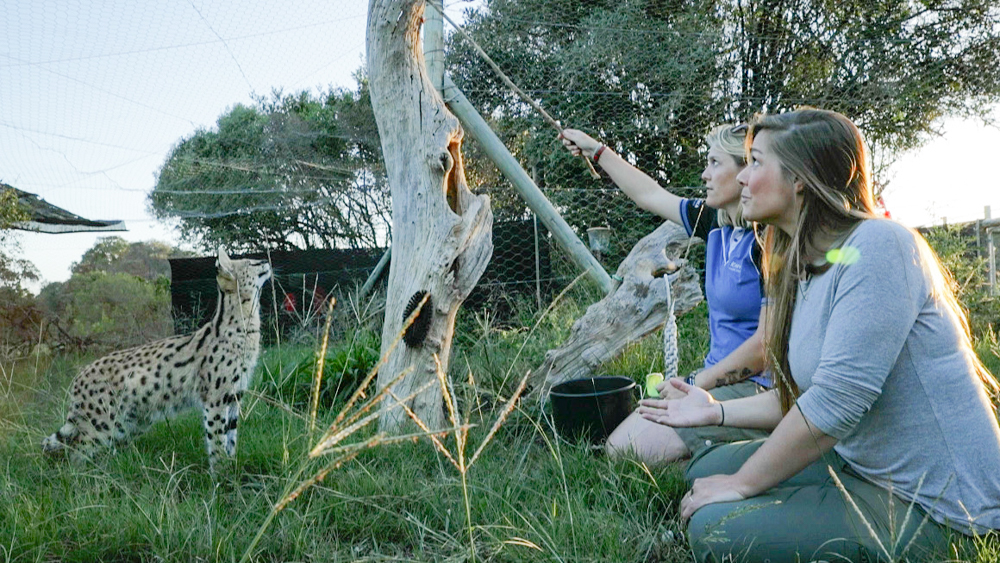Conservation Success: Serval Reintroduction

A serval is a medium-sized wild cat with black spots decorating its pale reddish-brown coat. They have long legs and large ears. The serval is one of ten indigenous African wild cats. Three other small wild cats are found in South Africa are the caracals, African wild cats and black-footed cats. Lion, leopard and cheetah are larger and more popular African wild cats.
Servals are carnivores and very successful hunters. They prey on small antelopes, hares, snakes, rodents, birds and frogs.
Although servals occur in a widespread range across sub-Saharan Africa, they rarely survive outside of protected areas. These cats were once found in the Eastern Cape, but have been wiped out over the last century due to human habitation, stock farming and hunting. Kariega Game Reserve was one of the first private game reserves to reintroduce the serval into the Eastern Cape. We are proud to announce our recent conservation success with the reintroduction of a male and female serval onto Kariega Game Reserve.
Contact us to enquire and book your stay at Kariega Game Reserve and perhaps you will see a serval on your safari drives.
Serval Reintroduction History
In 2012 Kariega Game Reserve started a serval reintroduction programme to order to reestablish this species in the area and help balance the predator-prey populations. The initial serval reintroduction took place in October 2012 when two males were released. Two female servals were reintroduced in April 2013. Unfortunately both these serval reintroductions did not result in the cats setting up their territory as breeding pairs on the reserve. Instead, the individuals split up and moved out of the area.
Our conservation team undertook further research and created an adjusted reintroduction plan. Two serval pairs were brought onto the the reserve in early 2017. These two breeding pairs were set up in large natural enclosures on the reserve. They were fed and cared for by passionate Kariega conservation team and the Kariega Conservation Volunteers.
The project aim was for the servals to mate and produce kittens. The kittens would be reared by their mothers who would teach them how to hunt and look for food and they would then be released to create a new serval population in the wild.
Unfortunately, working with animals doesn't always go according to plan... Both of the female servals had kittens but sadly none of them survived. We also discovered that one of the females had contracted a contagious disease and she had to be put down in order to contain the virus and then one of the males had to be euthanised due to a broken leg.
Conservation Success: Servals Released
In mid-2019 our conservation team made the decision to release the two servals onto the reserve and monitor their progress. We are very pleased to report that these servals have been regularly seen together and look to be establishing their territory on Kariega Game Reserve. They are healthy and successfully hunting and fending for themselves.
This conservation success has come after seven years of long hours and many ups and downs. We are hopeful that the servals will breed in time and reestablish a wild serval population at Kariega Game Reserve.

Be sure to subscribe to our blogs and join our Facebook, Instagram and Twitter communities to make sure you don't miss our updates about the servals progress. We would love to see your pictures and videos if you saw the servals while on safari at Kariega.
Servals Feature in YouTube Conservation Channels
Before their release, the Kariega Game Reserve servals featured in two popular YouTube conservation channels, BBC Earth and Brave Wilderness. We hope that the many viewers on these channels will now understand more about servals and the need to conserve them.
American YouTube personality and wildlife educator Coyote Peterson included his encounter with the servals in the video Ferocious Cat Needs Meat! Coyote's Brave Wilderness channel has 15 million subscribers and the serval video has been watched nearly 6 million times.
The BBC Earth team filmed the four part Wild Lands South Africa series exclusively at Kariega Game Reserve. The servals featured in their first episode titled Deadliest Predators. You can see conservationist, filmmaker and BBC Earth presenter Hannah Stitfall with one of the servals in the image below. The BBC Earth YouTube channel has 5.68 million subscribers.
When you watch these videos you will see that the servals are very feisty. This characteristic is essential to help them survive in the wild.
More About Kariega's Conservation & Reintroduction Projects
Both Kariega Game Reserve and the Kariega Foundation are recognized as leaders in well-researched reintroductions of endemic and rare species in the Eastern Cape. Other reintroduction projects include brown hyena, leopard and African barred owlets.
Please visit our Kariega Foundation page for a full list of conservation and community projects.
Read our previous serval blogs here.
One of the best ways to support our conservation efforts is to book a safari! Our conservation projects are managed by our Kariega Foundation and fuelled by a conservation levy paid by all adult guests visiting Kariega Game Reserve. This makes our safari guests valued conservation partners and supporters. Email us on reservations@kariega.co.za to find out more.
Serval reintroduction photo credits: Kariega guides Brendon Jennings, Brett Collett and Jo Haesslich, Kariega Conservation Volunteer Programme and BBC Earth cameraman Benn Berkeley.












